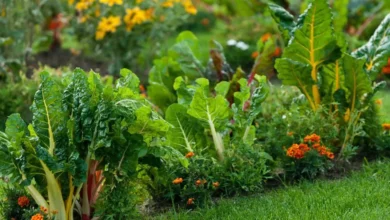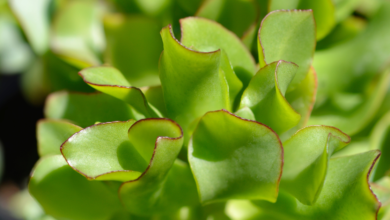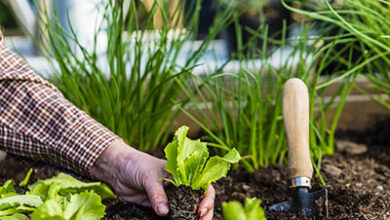Begonias are a favorite among gardeners. Begonias come in an array of hues, forms, and dimensions to suit any exterior space. Plus, they’re easy to care for and can thrive even in shady areas. Whether you’re looking for something low-maintenance or want an eye-catching statement piece for your yard, begonias are a perfect choice.
No shortage of options exists when it comes to begonias. Wax begonias offer waxy leaves in green or bronze hues; rex begonias showcase intricate foliage patterns; tuberous begonias flaunt bright pink and yellow blossoms; angel wing varieties sport delicate white flowers on long stems; and dragon wing types boast dramatic red petals resembling wings when open.
No matter which types you choose, all begonia plants need similar conditions to thrive: moist soil (but not soggy), indirect sunlight (or filtered light indoors), and regular watering during active growth periods (spring through fall). Fertilize regularly during their growing season using an organic fertilizer formulated specifically for flowering plants – this will help promote more blooms throughout the summer months.
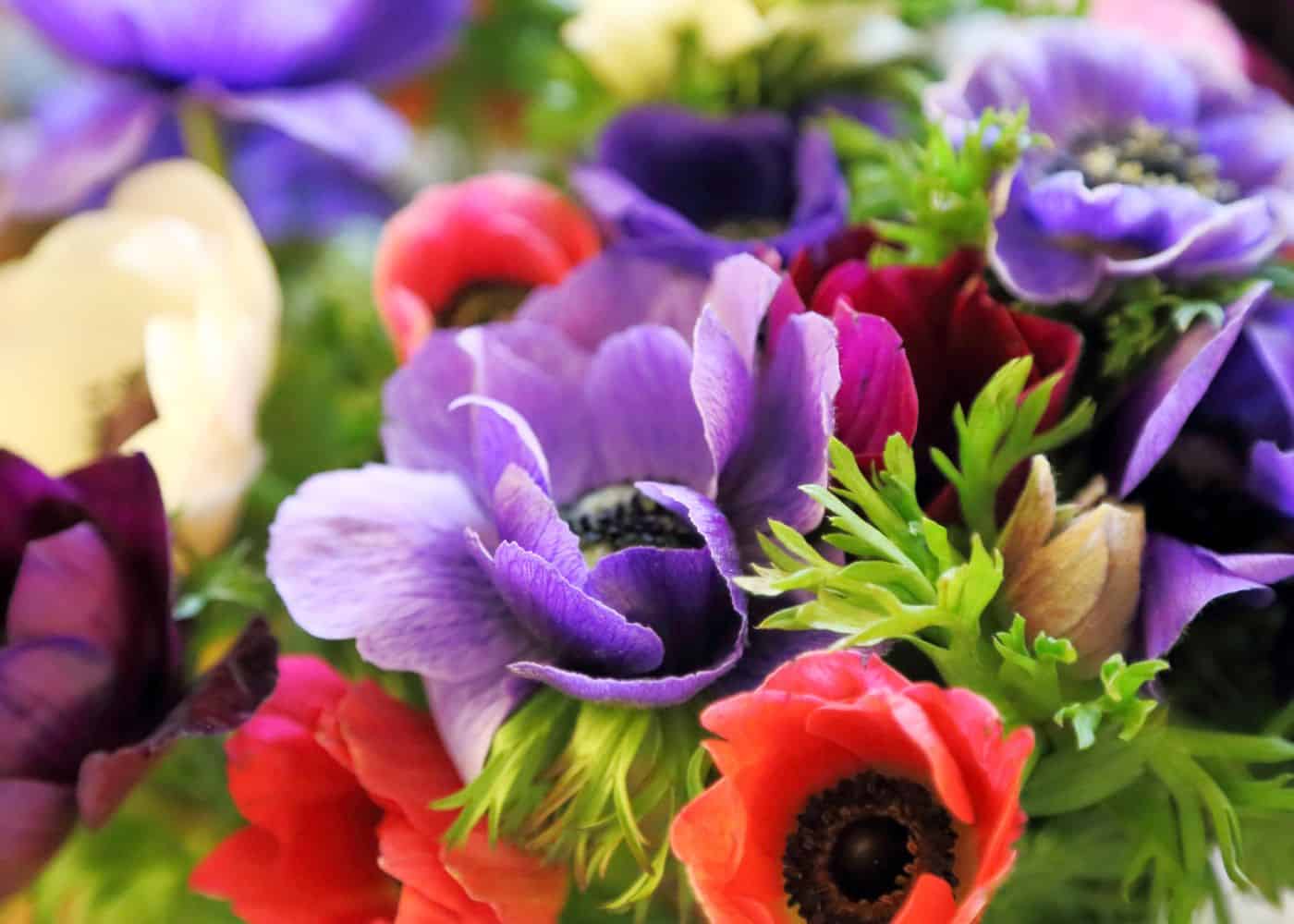
7. Poppy anemone
Poppy anemone is a beautiful flower typically planted in spring that can add color and life to any garden. The blossoms of poppy anemone come in a variety of vibrant hues, including pink, red, white, and even yellow. The foliage is also attractive with its feathery leaves. They are easy to care for and will thrive in full sun or partial shade locations.
The poppy anemone grows best in moist soils with good drainage but can tolerate some drought conditions once established. The poppy anemone does not thrive in overly warm environments, so it is best to keep them away from areas that experience extreme heat during the summertime.
It’s important to water your poppy anemones regularly during dry spells; however, avoid overwatering as this could cause root rot or other fungal diseases on the plant’s roots which may lead to death if left untreated for too long. Make sure you mulch around the base of your plants after planting – this helps retain moisture levels while keeping weeds away from their delicate stems and leaves.
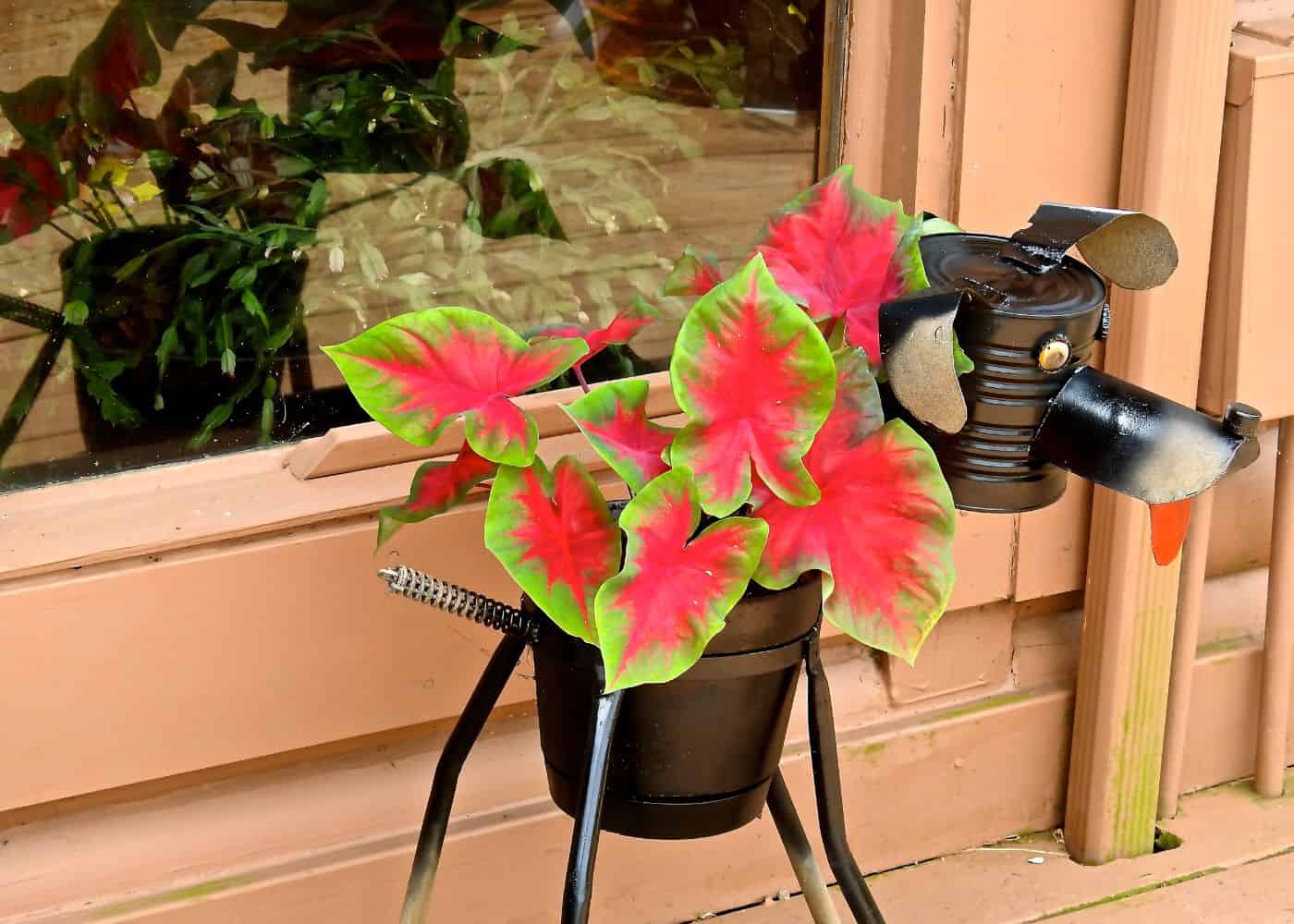
8. Caladium
Caladium is a lush tropical plant boasting bold, vivid foliage in hues of pink, red, white, and green – an ideal pick for bringing vibrancy to your garden with minimal upkeep. It’s easy to care for and requires minimal maintenance once established. This makes caladiums perfect for busy homeowners who want to add a splash of color without having to spend too much time tending their gardens.
Caladiums can be planted in full sun or partial shade depending on the variety you choose. Keep the soil damp, yet not overly wet to prevent root decay. Fertilize monthly during the growing season with a balanced fertilizer. If planting multiple plants together, space them at least 12 inches apart so they have enough room to grow properly without overcrowding each other out.
When planting caladium bulbs, dig holes about twice as deep as the bulb itself and place them pointy side up in the hole before covering them back up with soil and gently pressing down around it until firmly packed in place. Water thoroughly after planting then continue regular watering throughout its growing season (April through October).
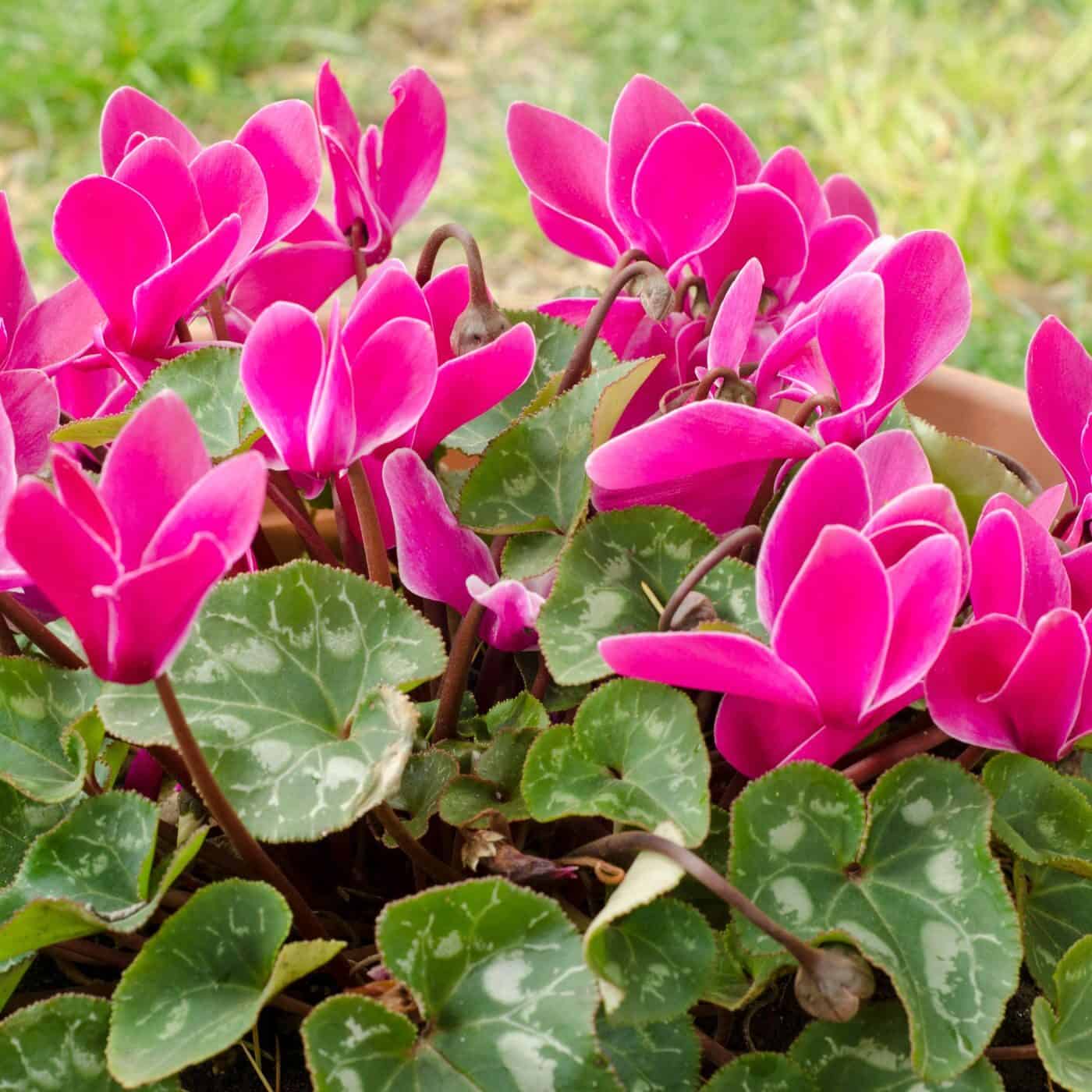
9. Cyclamen
Cyclamen is a beautiful flower that has been around for centuries. The plant grows from tuberous roots and produces delicate blooms with five petals that range in color from white to deep pink or purple.
Cyclamen are perfect for those with little gardening experience or a limited amount of time to dedicate, as they’re easy to maintain. Cyclamen favor cooler climes, so they should be situated in spots that receive some shade during the hottest period of the day.
When it comes to watering, cyclamen do best when kept moist but not soggy; too much water can lead to root rot or other problems. In terms of soil type, cyclamen like rich loam with plenty of organic matter such as compost or peat moss added into it before planting. Fertilizing your plants every month will help ensure healthy growth and vibrant blooms throughout the season.
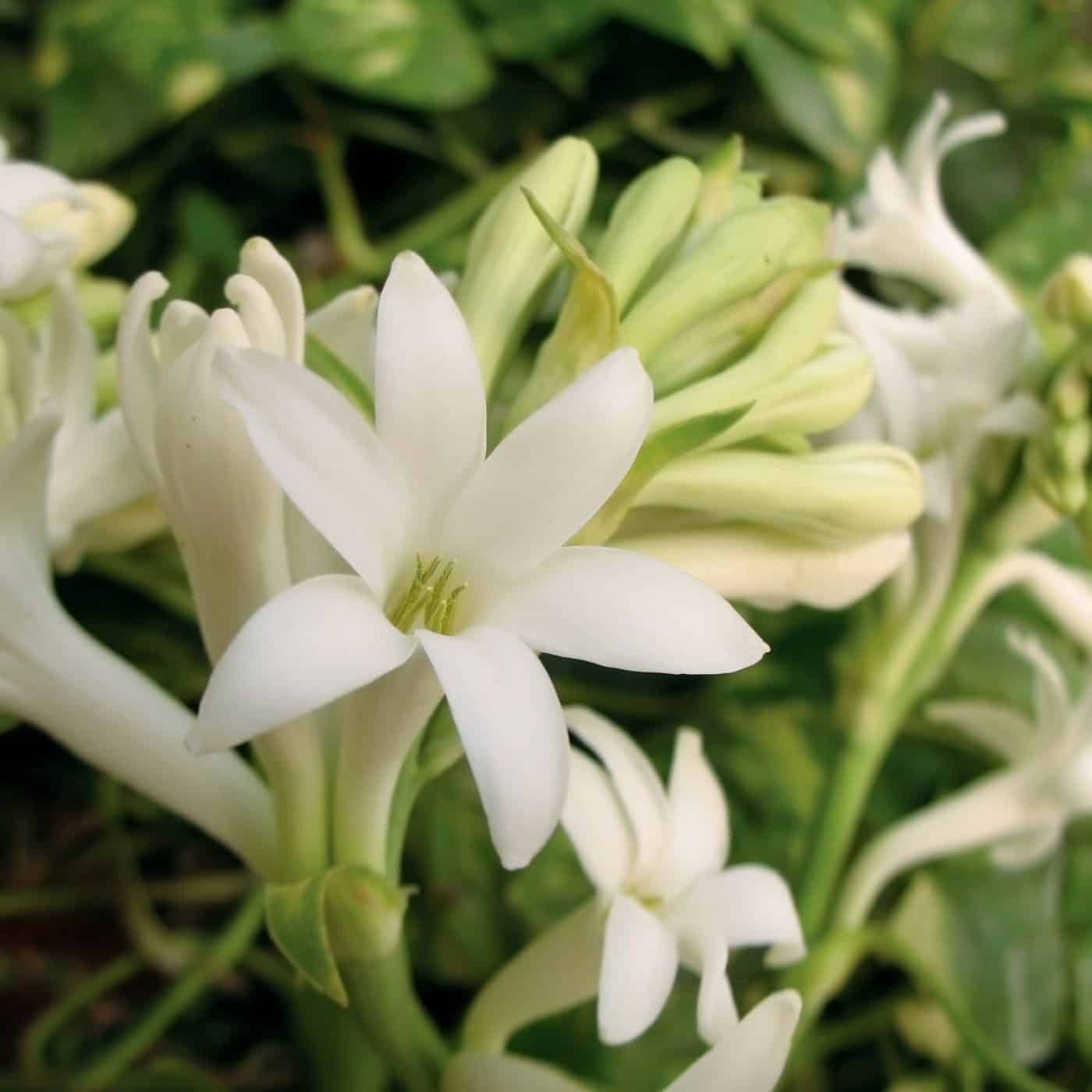
10. Tuberose
Tuberose (Polianthes tuberosa) is a fragrant flowering plant that has been used in perfumes and flower arrangements for centuries. Native to Mexico and Central America, the flowers are white with yellow centers and have an intensely sweet scent that can fill an entire room. Popular for nuptial arrangements, such as boutonnieres, corsages, and table decorations, these blooms are often included in bouquets.
Tuberose grows best in warm climates with lots of sun exposure. Plant them in soil that drains well and is filled with organic matter, such as compost or manure. Water regularly during dry spells but don’t let them sit too long in waterlogged soils; they won’t tolerate it very well.
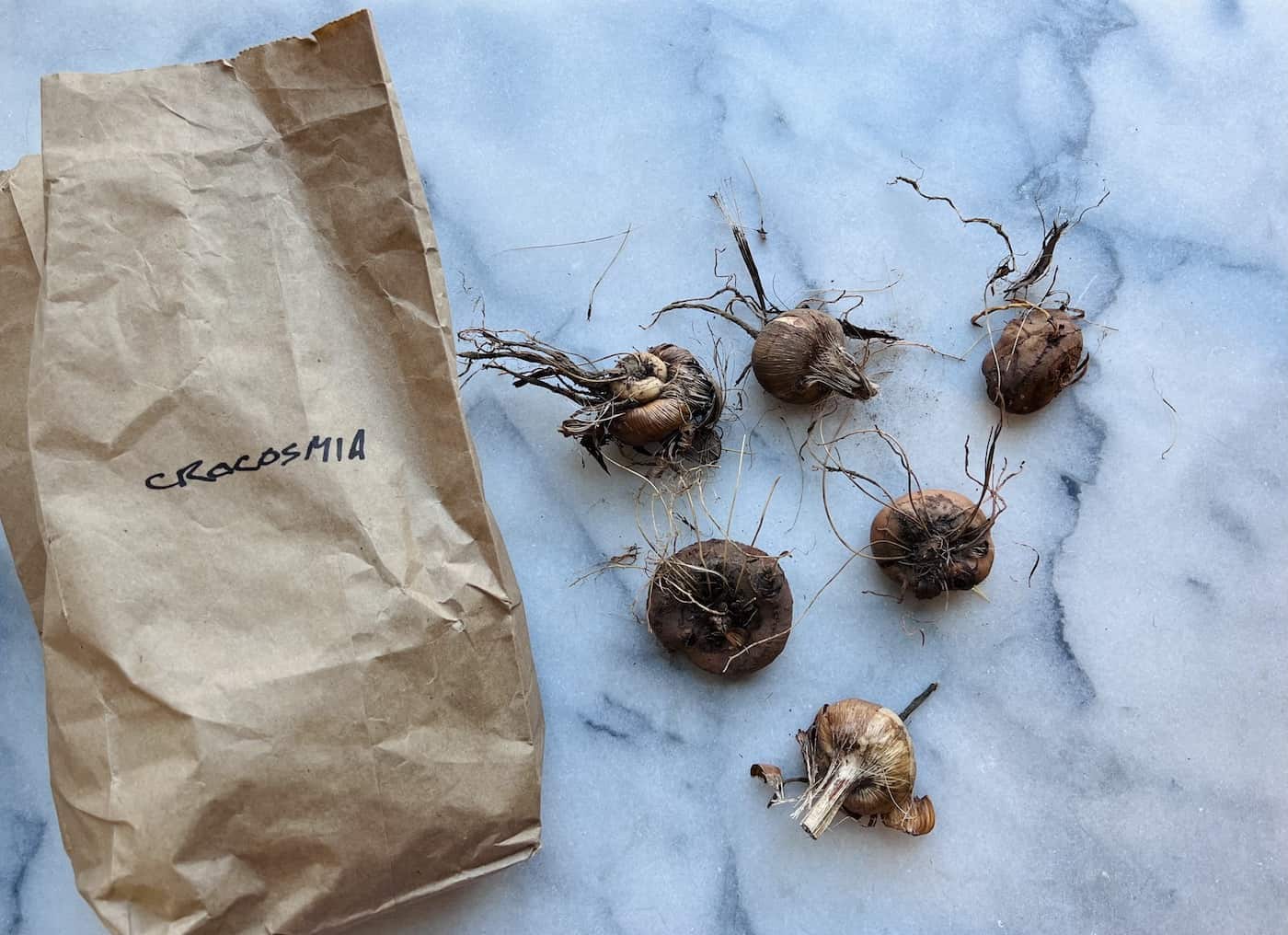
11. Crocosmia
Crocosmia is a bright tropical-looking flower that’s surprisingly cold-hardy. And not only do gardeners love these plants, but hummingbirds do too.
Native to South Africa, this member of the iris family can be grown in USDA zones 5-9. It’s easy to care for, with minimal pruning required once established. The flowers range from scarlet, tangerine, and saffron to rose-hued and blossom in the middle of summer until the end of autumn.
Plant crocosmia in well-drained soil that gets plenty of sun for the best flowers. Water regularly during dry spells, but don’t overdo it – too much water can lead to root rot and other problems. Fertilize with a balanced fertilizer every spring as new growth appears for best results. Deadhead spent blooms throughout the season to keep your plants looking their best.
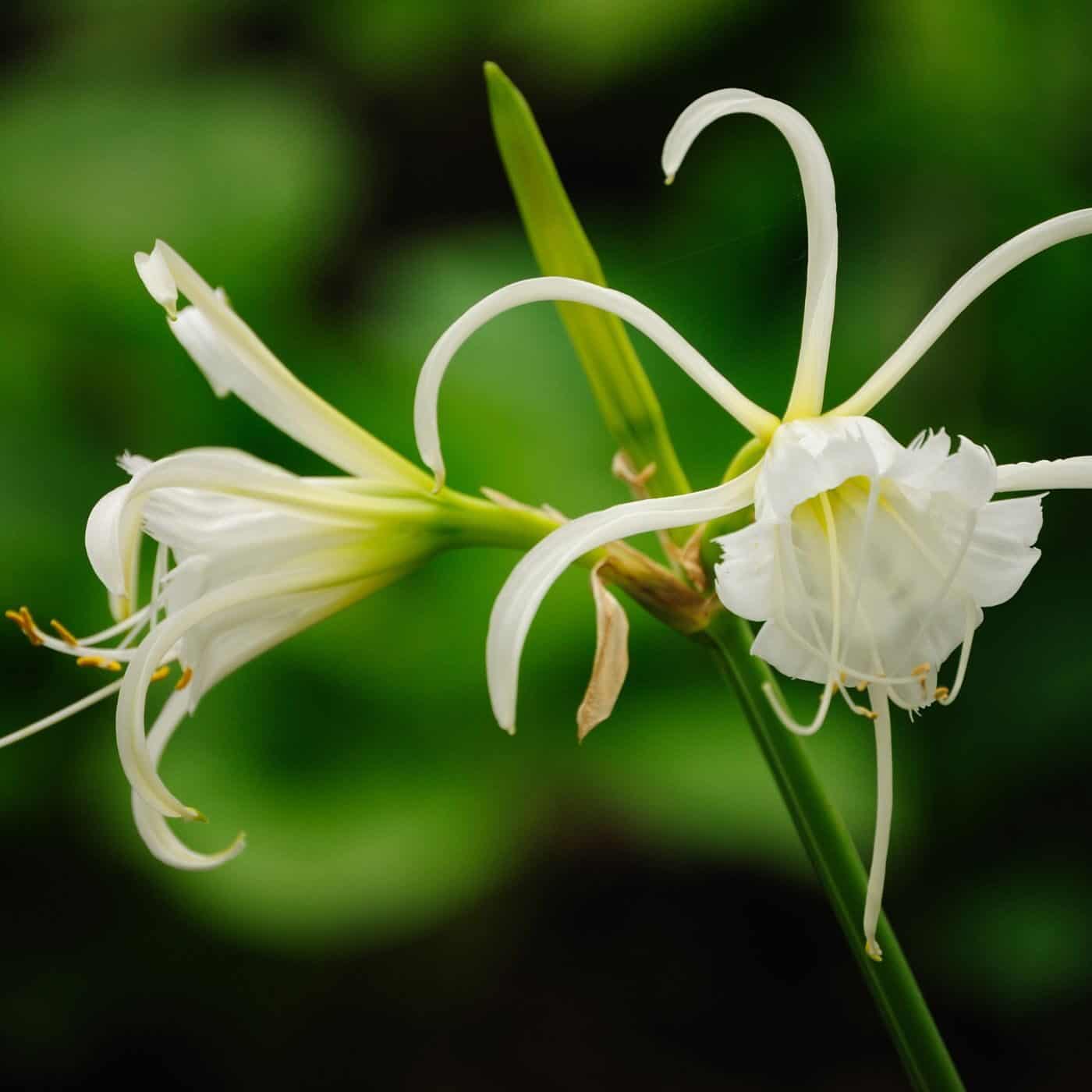
12. Peruvian daffodil
Peruvian daffodils, otherwise known as Inca lilies, can be a captivating addition to any garden. Native to Peru and Bolivia, these beautiful flowers come in shades of yellow, white and pink. The unique shape of the petals give them an exotic look that is sure to add interest and beauty to your outdoor space.
Peruvian daffodils are relatively easy to care for as they require minimal maintenance once established. They thrive in full sun or partial shade with regular watering and occasional fertilizing during the growing season.
When planting Peruvian daffodils, select a spot that provides well-draining soil and ample space for root growth. Planting them too close together can lead to overcrowding which can cause stunted growth.
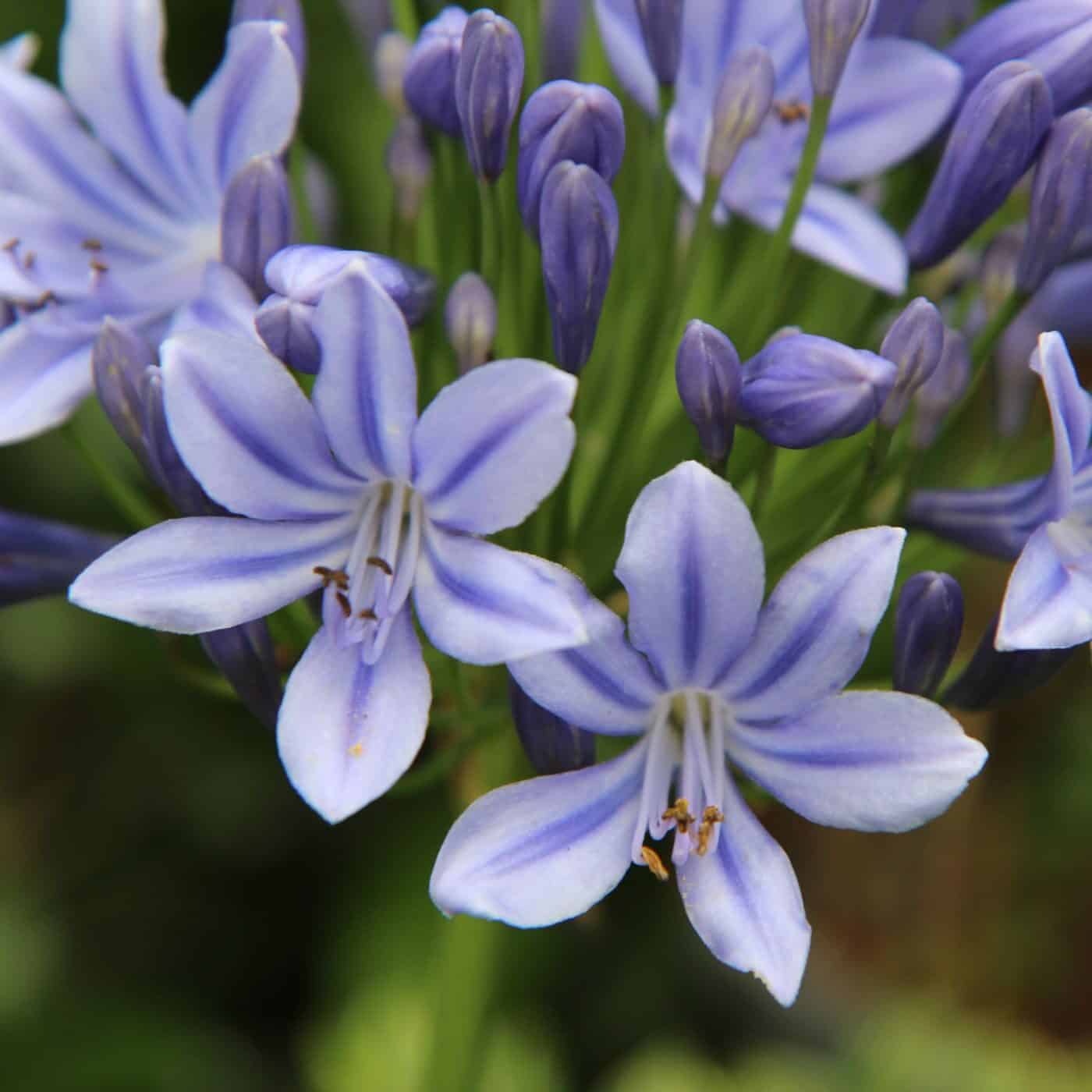
13. Agapanthus
Agapanthus is a beautiful flowering bulb that adds cool color and architectural shape. The plants produce tall flower stalks with clusters of bell-shaped blooms in shades of blue, white, and purple. They do well in most growing conditions, though they prefer full sun and regular watering when newly planted.
When planting agapanthus bulbs, it’s important to provide them with a balanced fertilizer during the growing season and plenty of space between each bulb so they have room to grow without overcrowding other plants. If planting under deciduous trees where light levels vary throughout the year, choose earlier flowering varieties such as ‘Blue Heaven’ or ‘White Star’.
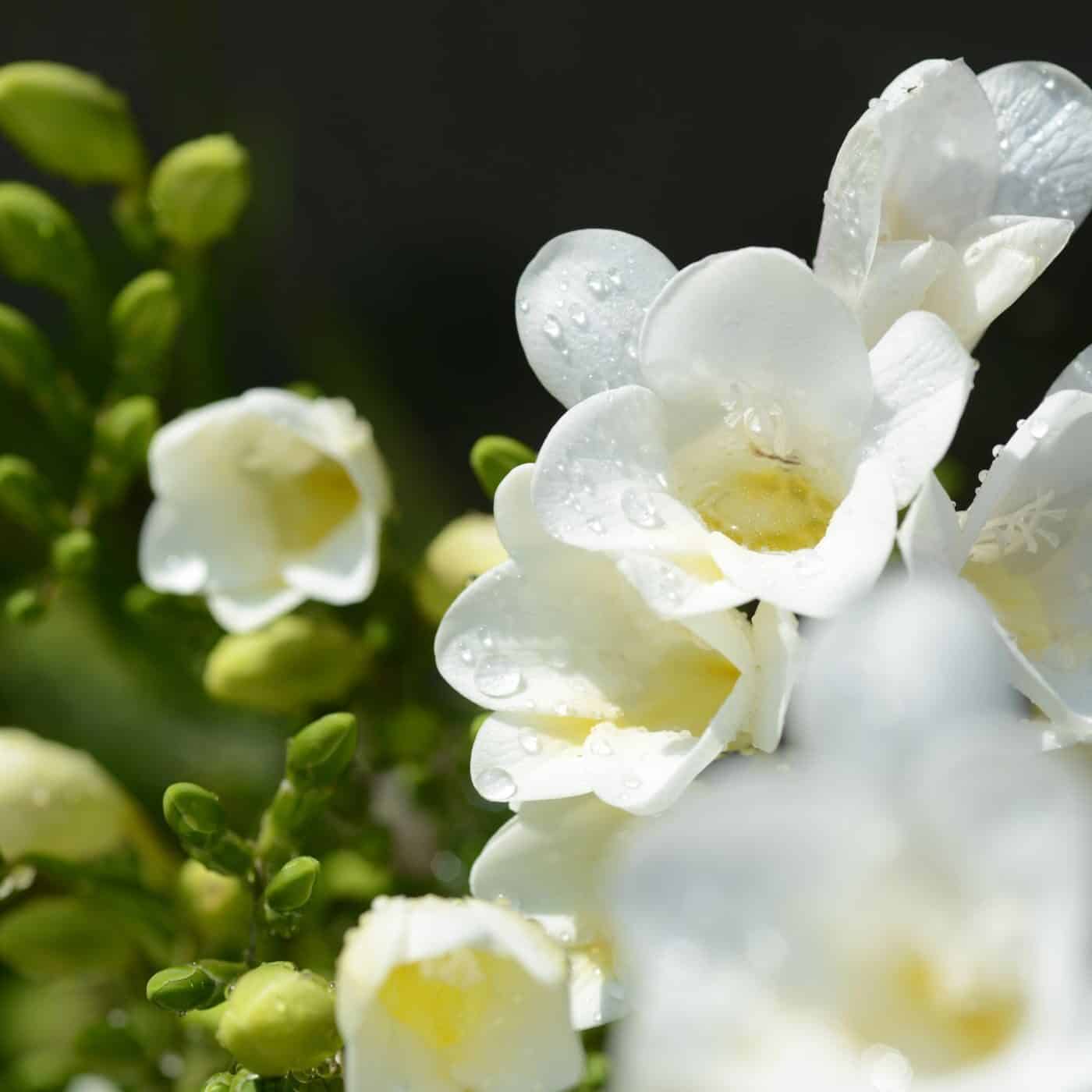
14. Freesia
Freesia is a beautiful, fragrant flower that’s sure to bring life and color to any garden. Its vibrant petals, ranging from yellow to orange and pink or white, are sure to be a delightful sight in any garden with its characteristic aroma. Freesias are native to South Africa and have been cultivated for centuries by home gardeners around the world. They’re easy to grow and can thrive in almost any soil type as long as they get plenty of sunlight.
Planting freesias in groups will give you a stunning display of blooms throughout spring and summertime. When planting freesias, make sure you space them at least 6 inches apart so they have room to spread their roots. You should also plant them slightly deeper than other flowers – about 2-3 inches deep instead of 1 inch – since their root system grows down rather than sideways as most plants do.
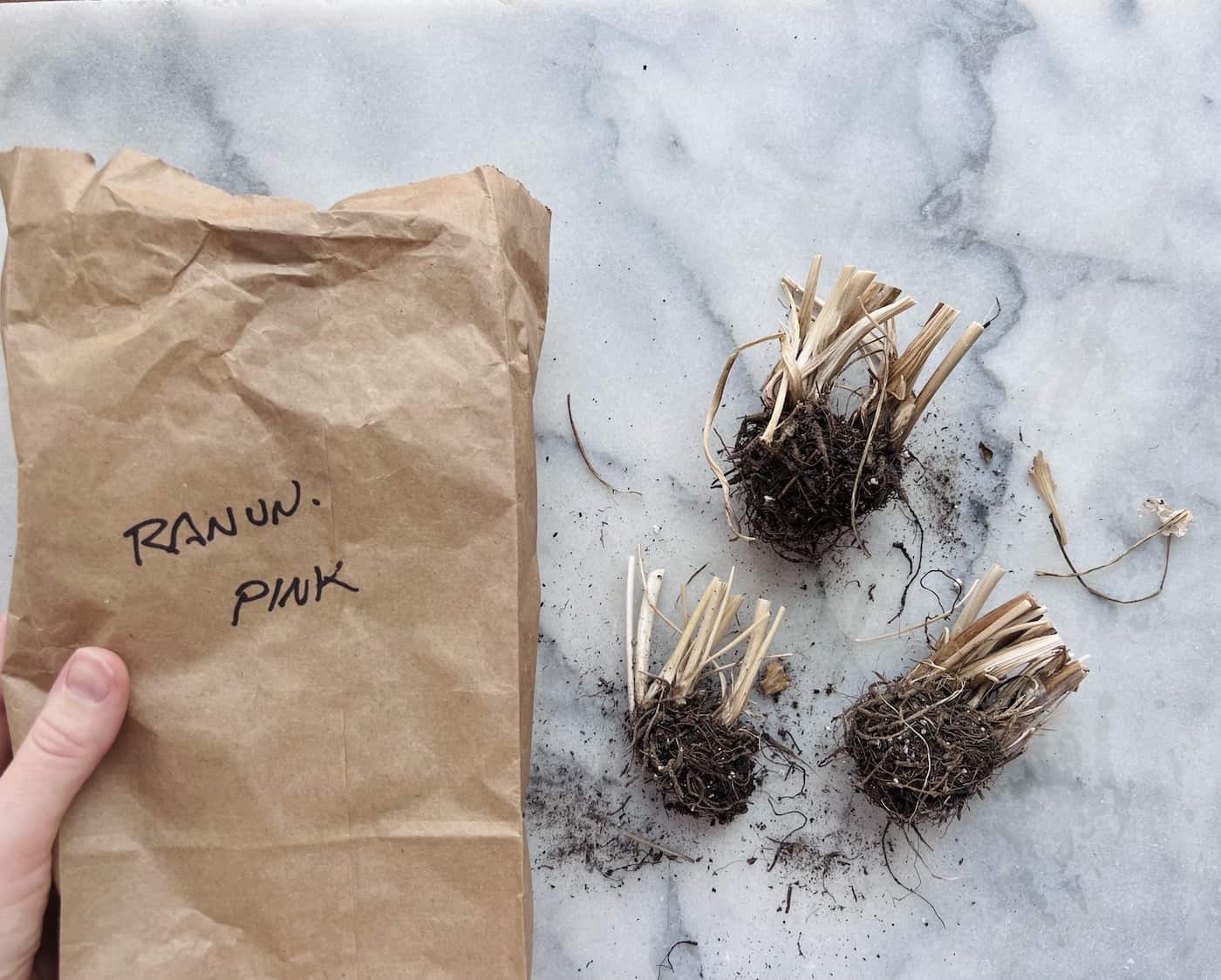
15. Ranunculus
Ranunculus is a spring-flowering bulb that’s perfect for adding some elegant color to your garden in early spring. These smaller roots/bulbs are easy to plant and can be planted any time from late winter until early summer.
You’ll want to look for larger bulbs since they generally bloom better than smaller ones. Plant them about three inches deep and make sure the soil is well drained so the bulbs don’t rot in cool, damp soil.
For the best bloom results, find an area with around six hours of sunlight each day; Take care that no leafy trees are casting too much shade during the flowering season. You should also give them plenty of space between each bulb when planting; about four inches apart will do nicely.
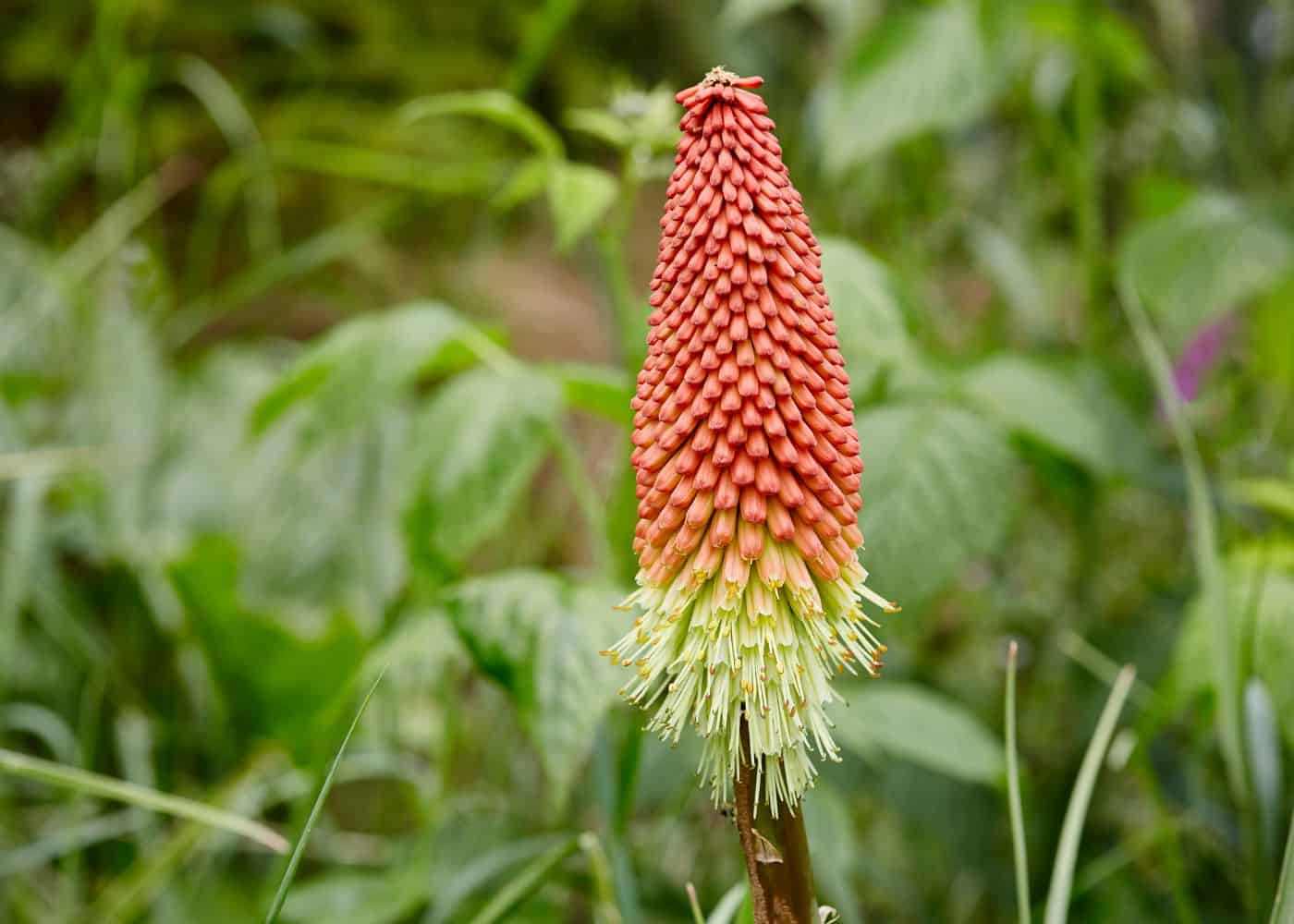
16. Red hot poker
Red hot poker, also known as torch lily or kniphofia, is a beautiful and hardy perennial. The plant grows in clumps of grass-like foliage with spikes of vibrant red and yellow flowers rising above it.
Red hot pokers are easy to care for and require minimal maintenance once established. They prefer full sun but will tolerate some shade and can survive temperatures down to -10°F (-23°C).
For optimal blossoms, ensure your red hot poker plants are supplied with sufficient water during their growing season (spring-fall) and soil that drains well. Adding mulch around the base of the plants helps retain moisture in dry conditions. If necessary, fertilize lightly in spring with an all-purpose fertilizer. Deadhead spent blooms throughout the summer months; this encourages new growth and more flowers.
If you’re feeling adventurous, try propagating your own red-hot poker plants by dividing them every few years. Simply dig up the entire clump carefully and divide it into smaller sections before replanting each section separately. This method ensures healthy growth while also allowing you to create multiple specimens from one original plant – a great way to spread these fiery beauties throughout your garden.
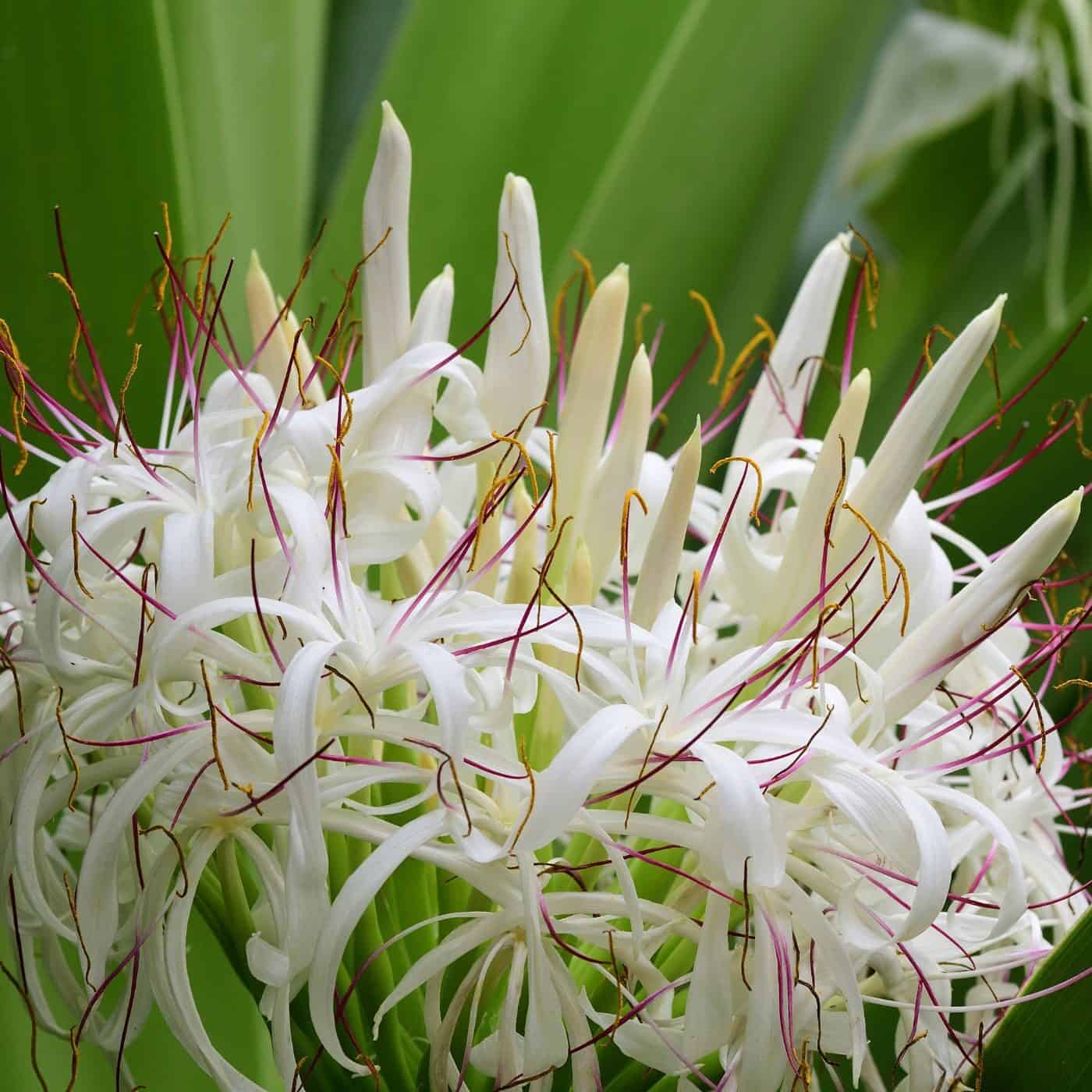
17. Crinums
Crinums are unique and beautiful flowering plants that are sure to bring any garden to life. These flowers boast large, glossy foliage and come in a range of vibrant hues, such as pink, white, purple, yellow, and red. They require minimal care once established but need full sun and ample water for optimal growth.
When planting crinums, make sure the soil has good drainage; otherwise, they may rot due to too much water. Spring is the optimum time to plant crinums, but they can be planted anytime during the growing season if needed. It’s important not to over-fertilize these plants as it can lead them into shock, which could stunt their growth.
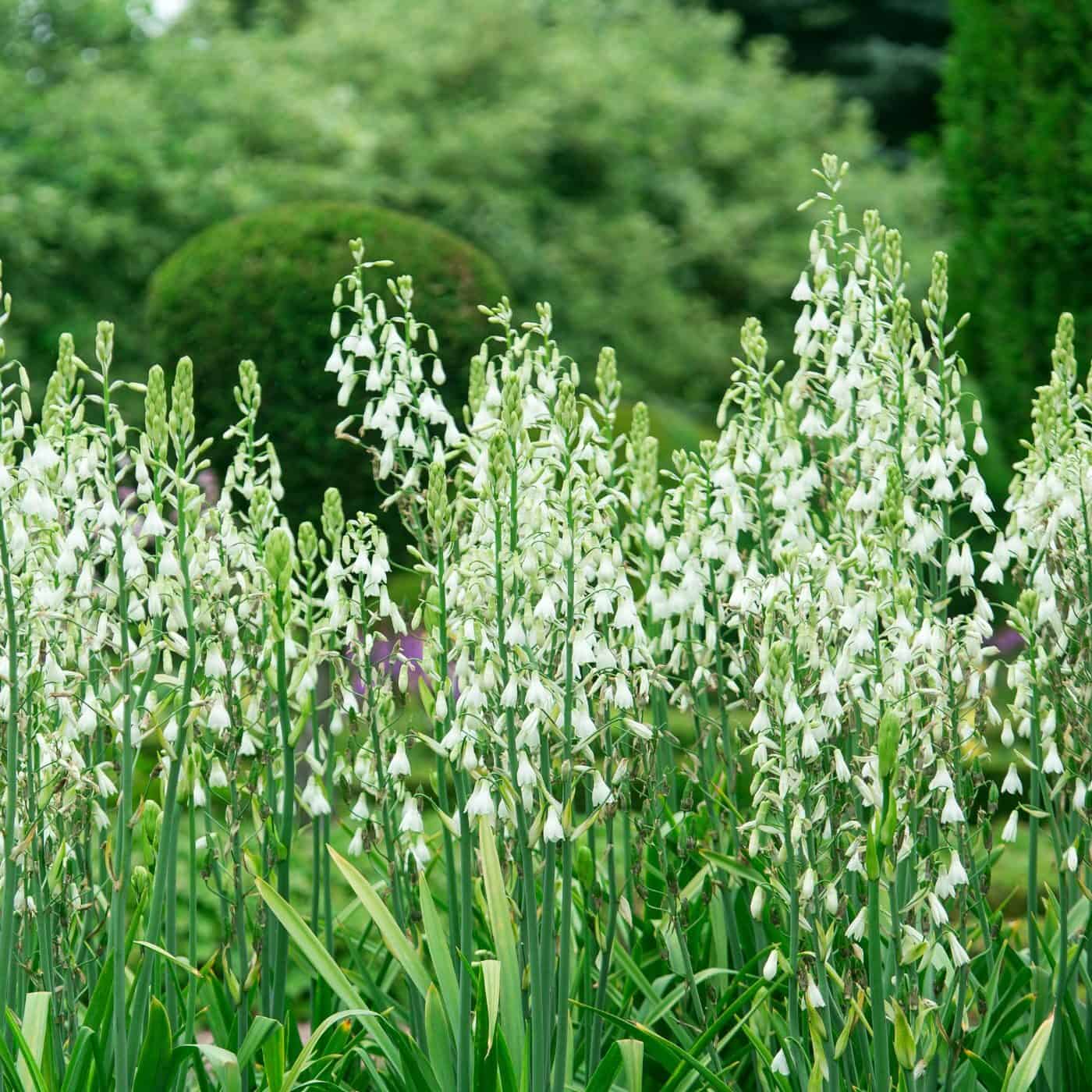
18. Galtonia candicans
Summer hyacinth (Galtonia candicans) is a summer flowering bulb that produces delicate white blooms. These flowers can be planted in the spring for a show of flowers in the early summer months. The flower stalks will generally bloom from May to July depending on the growing conditions.
When planting, select a spot with some sun and deciduous trees for shade during the day’s hottest hours. A balanced fertilizer should be used when preparing your garden bed before planting. You’ll find that these delightful plants thrive best when given ample sunlight and water.
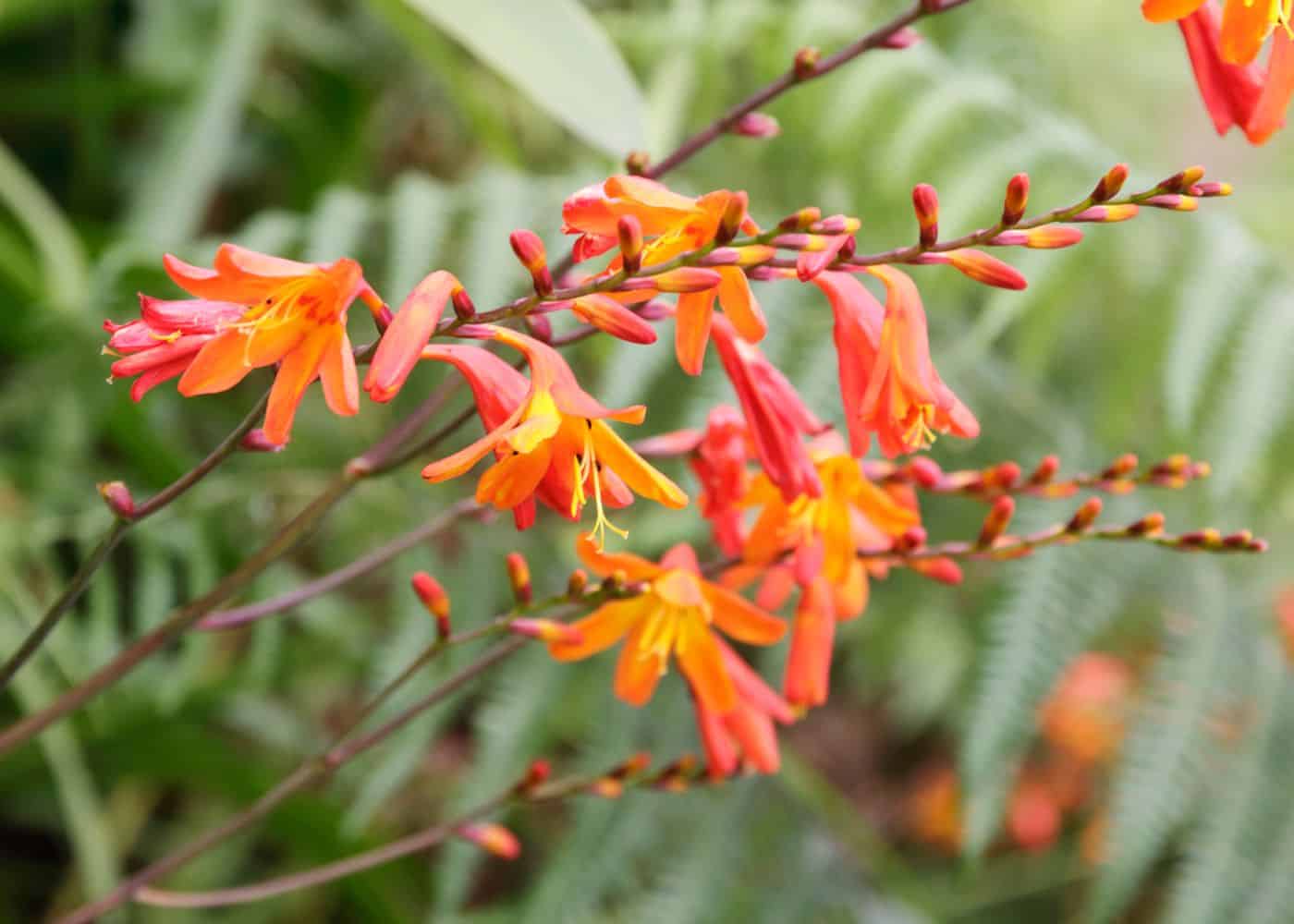
19. Montbretia
Montbretias, also known as African corn lilies, are eye-catching flowers to plant. They have long, strap-like leaves that can reach up to three feet long and produce vibrant orange or red flowers with yellow centers during summer. Their bright colors make great border plants for flower beds or containers around patios and decks and attract hummingbirds.
Montbretias are easy to care for. These plants favor sunny or partly shaded spots and soil with an average pH that drains easily. Be sure to space them at least 18 inches apart so they have plenty of room to grow.
To ensure your plants get enough moisture throughout the season, add a 2-inch layer of mulch over the roots after planting them into the ground or potting soil mix if you’re growing them in containers. Fertilize montbretia in spring using a balanced fertilizer. This will encourage strong root growth and promote more blooms throughout the season; however, too much nitrogen can cause excessive leaf growth, which could lead to weaker stems that may not support large flowers later on down the line, so use sparingly.
FAQs about bulbs to plant in the spring
Can bulb plants be planted in the spring?
Yes, many plants that grow from bulbs can be planted in the spring. Plants like lilies, gladiolus, and ranunculus are most commonly planted in the spring. On the other hand, fall is the right time to plant tulips, daffodils, and crocus bulbs. That said, you may be able to find potted tulips or daffodils in the garden center in the spring, and you can plant those in your garden in the spring.
Can I plant Dutch iris bulbs in spring?
Yes, you can plant Dutch iris bulbs in the spring. Plant Dutch iris bulbs as soon as the soil temp reaches about 10°C (50°F), and no later than mid-spring. Planting should be done as soon as possible after the purchase or delivery of the bulbs and no later than early summer.
What happens if you plant bulbs in spring instead of fall?
If bulbs are planted in spring instead of fall, they may not bloom until the following year. Additionally, some types of bulbs require a period of cold dormancy to flower properly, and if planted too early, they may fail to produce blooms or have reduced flowering. Moreover, late planting can also heighten the possibility of illnesses and pest insects.

